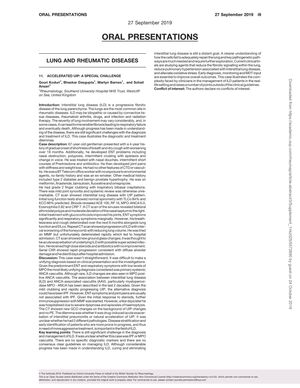Accelerated UIP: A Special Challenge
September 2019
in “
Rheumatology advances in practice
”

TLDR Diagnosing and treating rapidly worsening lung disease is difficult and requires better guidelines and understanding.
In 2019, a case study detailed the challenges in diagnosing and treating a 67-year-old man with interstitial lung disease (ILD) and a usual interstitial pneumonia (UIP) pattern. Despite no clear exposure to environmental agents or family history, the patient presented with respiratory symptoms, ENT issues, and joint pains. Initial treatments with glucocorticoids showed some improvement, but his condition rapidly deteriorated, leading to hospitalization and death within 8 days. The case highlighted the difficulty in distinguishing between idiopathic pulmonary fibrosis (IPF) and myeloperoxidase (MPO) ANCA vasculitis, as both can present with ILD changes. The patient's rapid progression and initial response to steroids suggested an autoimmune component, but the exact diagnosis remained unclear. This case underscored the need for better diagnostic markers, clearer management guidelines, and a deeper understanding of ILD pathogenesis. Current clinical trials focus on reducing fibrotic signaling, pulmonary hypertension, and oxidative stress in ILD. Early diagnosis and multidisciplinary team input are crucial for improving patient outcomes. The authors noted the complexity of managing ILD in real-life scenarios and the limitations of clinical guidelines, without declaring any conflicts of interest.